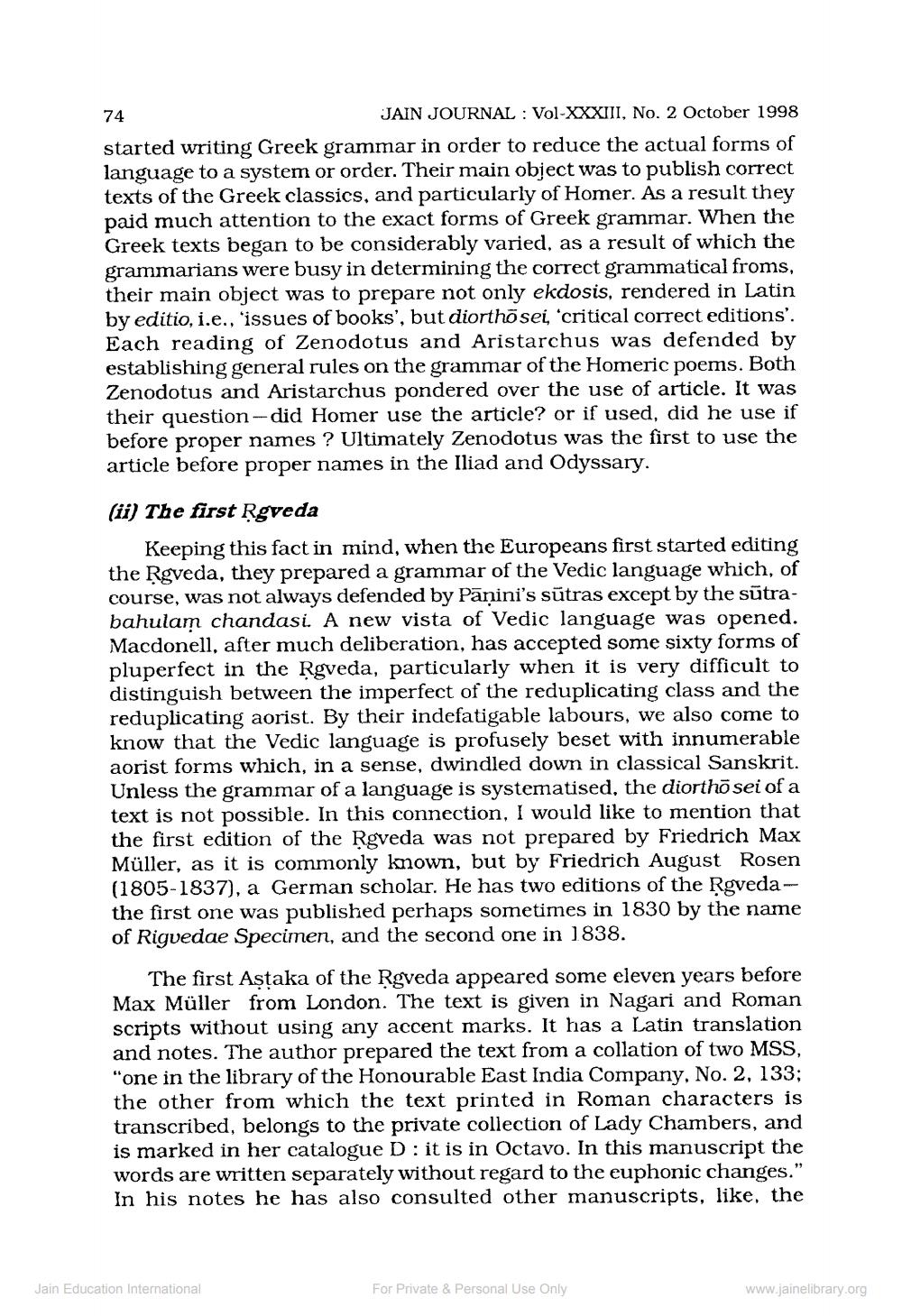________________
JAIN JOURNAL: Vol-XXXIII, No. 2 October 1998
started writing Greek grammar in order to reduce the actual forms of language to a system or order. Their main object was to publish correct texts of the Greek classics, and particularly of Homer. As a result they paid much attention to the exact forms of Greek grammar. When the Greek texts began to be considerably varied, as a result of which the grammarians were busy in determining the correct grammatical froms, their main object was to prepare not only ekdosis, rendered in Latin by editio, i.e., 'issues of books', but diorthōsei, 'critical correct editions'. Each reading of Zenodotus and Aristarchus was defended by establishing general rules on the grammar of the Homeric poems. Both Zenodotus and Aristarchus pondered over the use of article. It was their question-did Homer use the article? or if used, did he use if before proper names? Ultimately Zenodotus was the first to use the article before proper names in the Iliad and Odyssary.
74
(ii) The first Ṛgveda
Keeping this fact in mind, when the Europeans first started editing the Rgveda, they prepared a grammar of the Vedic language which, of course, was not always defended by Panini's sutras except by the sutrabahulam chandasi. A new vista of Vedic language was opened. Macdonell, after much deliberation, has accepted some sixty forms of pluperfect in the Rgveda, particularly when it is very difficult to distinguish between the imperfect of the reduplicating class and the reduplicating aorist. By their indefatigable labours, we also come to know that the Vedic language is profusely beset with innumerable aorist forms which, in a sense, dwindled down in classical Sanskrit. Unless the grammar of a language is systematised, the diorthō sei of a text is not possible. In this connection, I would like to mention that the first edition of the Rgveda was not prepared by Friedrich Max Müller, as it is commonly known, but by Friedrich August Rosen (1805-1837), a German scholar. He has two editions of the Rgvedathe first one was published perhaps sometimes in 1830 by the name of Rigvedae Specimen, and the second one in 1838.
The first Astaka of the Rgveda appeared some eleven years before Max Müller from London. The text is given in Nagari and Roman scripts without using any accent marks. It has a Latin translation and notes. The author prepared the text from a collation of two MSS, "one in the library of the Honourable East India Company, No. 2, 133; the other from which the text printed in Roman characters is transcribed, belongs to the private collection of Lady Chambers, and is marked in her catalogue D: it is in Octavo. In this manuscript the words are written separately without regard to the euphonic changes." In his notes he has also consulted other manuscripts, like, the
Jain Education International
For Private & Personal Use Only
www.jainelibrary.org




